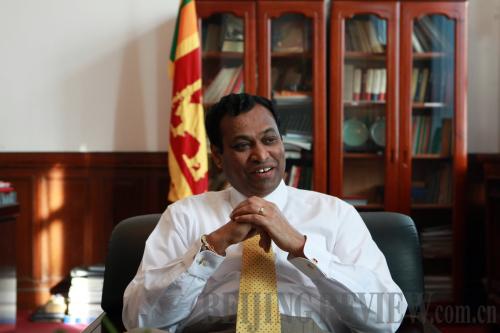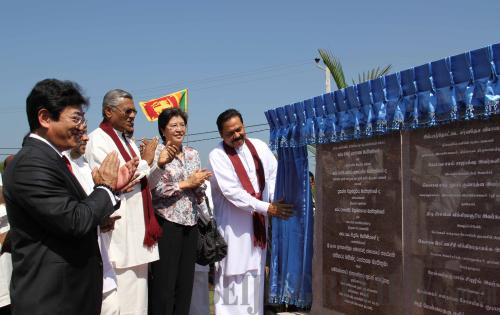|
 |
|
Sri Lanka has targeted an average GDP growth of 8 percent after 2010, but more importantly, it will seek to ensure that growth is more evenly spread Karunatilaka Amunugama, Sri Lanka's Ambassador to China (JIANG XIAOYING) |
With his re-election in January, Sri Lankan President Mahinda Rajapaksa appears poised to move his country ahead following years of civil unrest. By cashing in on its hard-won peace while strengthening ties with foreign countries—including China—he has proven himself committed to fulfilling the island nation's dream of becoming a "wonder of Asia."
Beijing Review reporter Yan Wei recently spoke to Sri Lanka's Ambassador to China Karunatilaka Amunugama about the country's aspirations. Excerpts follow:
Beijing Review: President Mahinda Rajapaksa set a goal of keeping its economic growth rate at 8 percent in his re-election campaign. Why is he so confident, and do you think the goal is attainable?
Karunatilaka Amunugama: For decades, Sri Lanka's economy underperformed relative to its potential due to terrorism. Despite numerous challenges, sound economic management yielded an average growth rate of 6 percent per annum over the past few years. Even in 2009, when the world financial crisis took a heavy toll on the global economy, Sri Lanka's GDP growth was 3.5 percent. It is expected to reach around 7 percent in 2010. The International Monetary Fund has also upgraded Sri Lanka to the status of a "middle-income emerging market."
Last May, we defeated the LTTE (Liberation Tigers of Tamil Eelam) terrorists. Terrorism is now no longer an issue in Sri Lanka. What we are now focusing on is infrastructure development, foreign investment and tourism. With these things, coupled with normal economic activities such as the export of tea, rubber, coconuts and industries producing garments and various computer-related products, we can achieve at least an 8-percent annual economic growth rate in the next few years.
We have already reached the $2,000 benchmark in our per-capita income. If we continue to develop at such a rate in the next couple of years, we will definitely reach an even higher per-capita income in Sri Lanka.
Sri Lanka is a small country with a small population. But compared with many other countries, we have relatively developed infrastructure, as well as good education and healthcare systems. So Sri Lanka's human resource development is quite remarkable. When you put these things together, you know we are able to achieve that higher growth rate. Sri Lanka has targeted an average GDP growth of 8 percent after 2010—but more importantly, it will seek to ensure that growth is more evenly spread.
 |
|
A SOLID TAKEOFF: Sri Lankan President Mahinda Rajapaksa (first right) unveils the nameplate of a new international airport in the southern city of Hambantota on November 27, 2009, along with China's Ambassador to Sri Lanka Yang Xiuping (second right). That day a Chinese company formally began construction of the airport, which is scheduled to be completed in three years (LIU YONGQIU) | Since the Sri Lankan Government defeated the separatist organization LTTE last year, Sri Lanka has been facing the pressing task of national reconciliation. What is the president's plan in this regard?
After defeating terrorism last May, President Rajapaksa brought forward the presidential election for about two years. The reason he did this is that he felt he should seek a fresh mandate from the people to implement his new vision for the future.
In the first term, he mainly focused on bringing peace and stability to Sri Lanka. Now he wants to make the second phase of his manifesto—national reconciliation, higher growth and economic prosperity for the Sri Lankan people—a reality.
In the presidential election last December, his candidacy was approved by the people with a large margin. He received an unprecedented majority of 1.8 million votes. Now that the majority of the people in Sri Lanka have endorsed his vision, the president's task is to achieve his economic targets during his second term and bring prosperity to the people.
| 